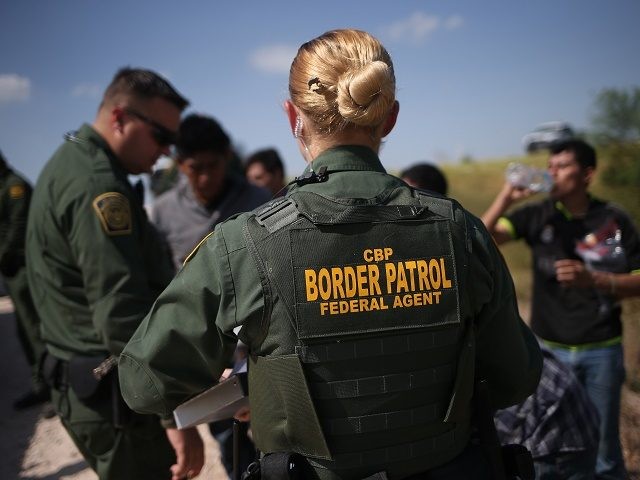Washington politicians often claim they need more resources in order to secure our borders, but our analysis at OpenTheBooks.com suggests the real problem may be a lack of political will.
Since 1993 — through Republican and Democratic administrations — the number of border patrol, customs, and immigration officers tripled from 20,000 to 60,000. If increasing the federal “investment” in border security meant a more secure border, a reasonable person would assume the number of undocumented persons would have decreased three-fold during this time. Yet, the exact opposite occurred. As the number of border patrol officers tripled, the number of undocumented entrants also tripled.
According to our latest report, “The Militarization of America,” in 1993 the Immigration and Naturalization Service (INS) and U.S. Customs Service employed 19,466 officers with arrest and firearm authority. With the re-organization of these departments under the newly created Department of Homeland Security (DHS) in 2003, the new agencies of U.S. Customs and Border Protection (CBP) and U.S. Immigration and Customs Enforcement (ICE) ballooned to 60,000 officers.
Still, the number of federal officers with border security responsibilities is even higher — around 100,000. In 2003, the U.S. Coast Guard and their approximately 41,000 active military members were transferred under the command of DHS. Much of the Coast Guard’s mission generally deals with border and trade security.
So with over 100,000 federal officers charged with the safety and security of America’s borders, do these federal officers have the requisite gear to perform their duties properly?
Since 2006, our data shows that nearly $400 million was spent arming the federal agents at ICE and CBP with guns, ammunition and military-style equipment. Nearly $250 million of this spending was on guns and ammunition alone. Then, after 2006, the Department of Defense (DOD) transferred another $175 million more in surplus military gear to DHS.
At ICE, spending on guns, ammo, and military-style equipment steadily increased to $31.85 million (2014) from $12.3 million (2007). Spending on weaponry at CBP was erratic, ranging from $7.1 million (2011) to $30.5 million (2010). Here’s just a sample of what these agencies purchased: belt-fed machine guns, long-range rifles, shotguns, infrared illuminators, H & K Machine guns, chemical munitions, .50 caliber rifles, 369 colt M4 rifles, riot guns, and commando rifles.
Then, $175 million in surplus war gear transferred from DOD to DHS — mostly to ICE and CBP — under Program 1033 since 2006. These transfers included thousands of bayonets, M14 and M16 rifles, plus other equipment such as airplanes, armored trucks, and mine-resistant vehicles.
In addition to the vast procurement of these individual agencies, our findings show that Homeland Security (DHS) procured 1.7 billion bullets since 2004 — including 452 million hollow-point bullets, a bullet that is outlawed by the Geneva Convention. Yet, between 2008 and 2012, official DHS documents admit that field officers fired only 881 bullets in-the-line-of-duty, a five-year period.
Why keep such a massive stockpile? In 2014, a General Accountability Office study showed that DHS had a 160 million “bullet inventory.”
Given the federal government’s vast resources, it is troubling — particularly in the age terrorism — they cannot tell us who these undocumented entrants are, where they are, what they’re doing here, and when they are going home.
The data suggests it’s not a question of resources. It’s a question of will.
Adam Andrzejewski is the CEO of OpenTheBooks.com and the author of the oversight report, The Militarization of America, here.

COMMENTS
Please let us know if you're having issues with commenting.